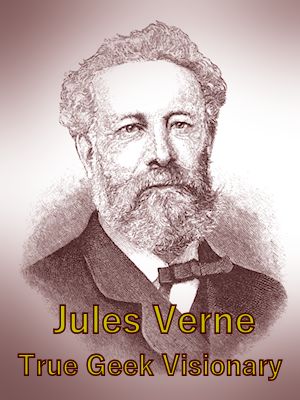 In the modern media of the 21st century people often complain that the news seems to focus on problems rather than solutions. As we study geek history we find many examples of the news media telling what can't be done while someone was in the process of showing us what is possible.
In the modern media of the 21st century people often complain that the news seems to focus on problems rather than solutions. As we study geek history we find many examples of the news media telling what can't be done while someone was in the process of showing us what is possible.
In the 1870s there were three different inventors working on the technology to transmit speech electrically that would become our telephone system. Thankfully they did not believe what they read in the newspaper back then.
In 1865 an editorial in the Boston Post stated that, "Well informed people know it is impossible to transmit the voice over wires and that were it possible to do so, the thing would be of no practical value."
A New York news item from 1868 reports, "A man has been arrested in New York for attempting to extort funds from ignorant and superstitious people by exhibiting a device which he says will convey the human voice any distance over metallic wires so that it will be heard by the listener at the other end. He calls this instrument a telephone. Well-informed people know that it is impossible to transmit the human voice over wires."
Jules Verne was a true inventor and visionary
There were many people who could look into the future and see what was possible, such as a true visionary Jules Verne, who was quoted in 1865 as saying, "In spite of the opinions of certain narrow-minded people who would shut up the human race upon this globe, we shall one day travel to the moon, the planets, and the stars with the same facility, rapidity and certainty as we now make the ocean voyage from Liverpool to New York."
You will usually find the biography of Jules Verne describing him as a 19th century French author, not a scientist or an engineer. In many ways Jules Verne was as much a true inventor and visionary as others from his time period who we would call scientists.
In 1865 Verne's novel, "From the Earth to the Moon," told the story of three men who launched a space capsule from Florida in order to visit the moon and return to earth. The space capsule also performs a splashdown in the Pacific Ocean on the return trip.
Keep in mind Verne was a 19th century French author living in France, but he correctly predicted the first manned mission to the moon would launch from Florida a century before NASA and anything space related existed in America. Verne's novel, "From the Earth to the Moon," contained many strikingly similar details to the 1969 NASA Apollo 11 mission, which launched a space capsule containing three men that would visit the moon and return to earth with a splashdown landing in the Pacific Ocean.
Leonardo da Vinci the greatest geek visionary
As a geek myself I am totally fascinated by the long list of things Leonardo Da Vinci worked on as a civil engineer. Quoting from the The American Society of Mechanical Engineers article, " He studied and designed war instruments such as tanks, catapults, submarines, machine guns, and other weapons. He also focused on mechanics of levers, gears, cranes, hydraulics, ball bearings, bicycles, and flying machines. He displayed civil engineering talents as well, with geometry studies and architectural designs of domed churches, fortresses, and canals." Keep in mind we are talking about a man who lived in the 1500s.
Quoting his famous letter of application from Leonardo Da Vinci to the Duke of Milan, "In case of a siege, I know how to dry up the water of the moats and how to construct an infinite number of bridges, covered ways, scaling ladders, and other machines for this type of enterprise."
Leonardo da Vinci is perhaps the greatest visionary to have ever lived. Leonardo saw the possibilities of flying machines in the 1500s, and designed in theory many examples of flying machines, centuries before the Wright Brothers launched their plane at Kitty Hawk. Relatively few of his designs were constructed or even feasible during his lifetime, the scope and depth of his interests were without precedent in recorded history.
Visionaries see the possibilities
In the 1940s and 1950s science fiction writer Isaac Asimov told amazing stories of robotics and artificial intelligence. The technology of the the 1940s and 1950s could not create the robots in the stories of Asimov. Today the stories of intelligent robots are no longer fiction.
Many people point to an article published in 1945, "As We May Think" by Vannevar Bush, as the earliest published vision of the concept of hypertext and the world wide web. Although Vannevar Bush was contemplating the aftermath of World War II, it took the Russians launching spy satellite Sputnik in 1957, and the fear of World War III, before the highway system of the ARPAnet was built in the 1960s. As the ARPAnet evolved into the internet, a world wide web of documents could now be implemented. Tim Berners-Lee developed HTML, and the vision of Vannevar Bush became the world wide web.
Some people dream of success while others wake up and work hard at it.
